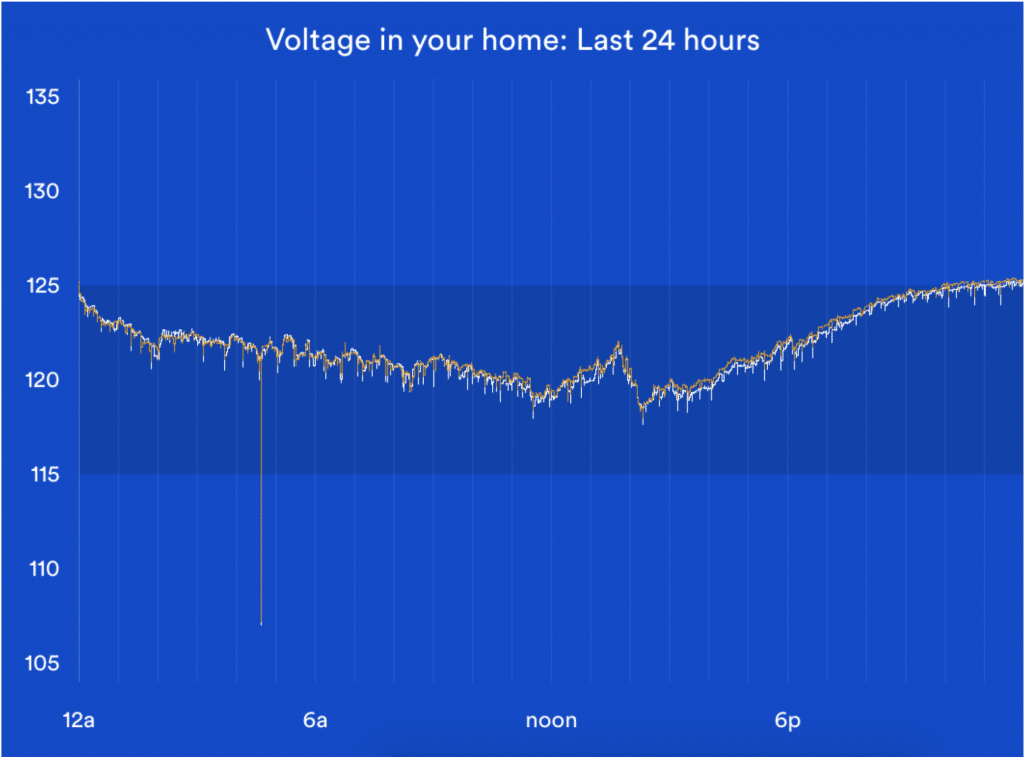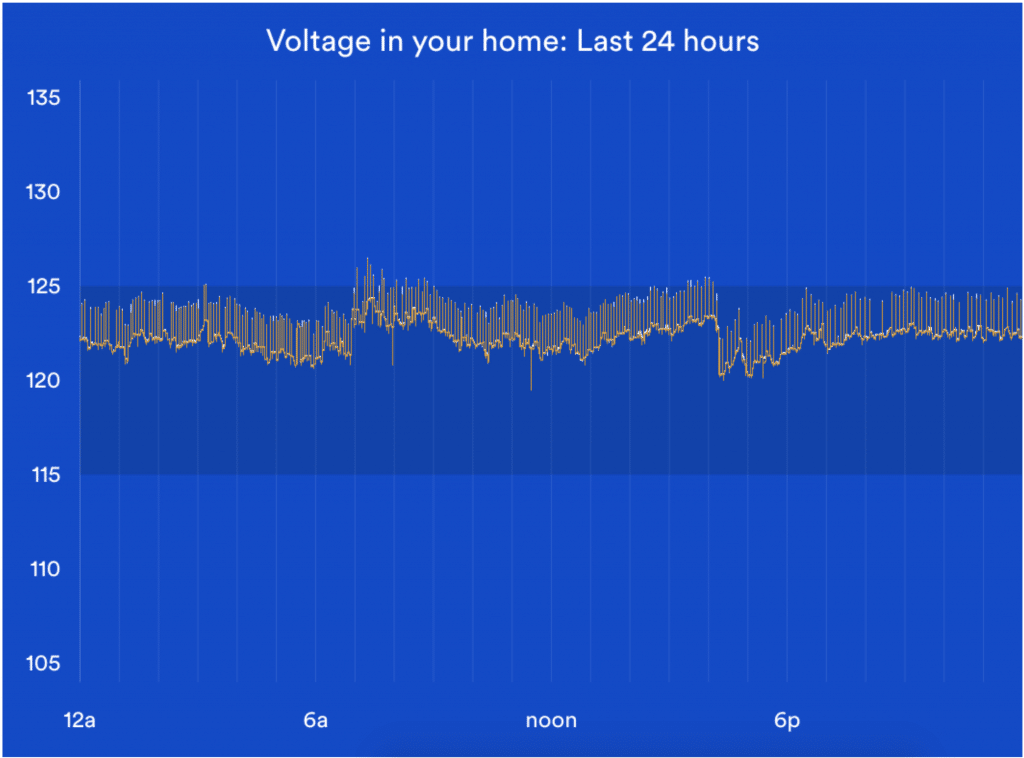Voltage Dips & Spikes
Most homes in North America have split-phase 120/240V electric service. This means the electric panel is fed by two electrical service lines from the utility. Each of these phases or “legs” sustains a voltage of 120V. (±5%)
However, certain issues can cause short-term fluctuations in voltage. When voltage drops 10% below the normal threshold (e.g. a 120V outlet dropping to 108 or below), it’s called a “dip”. When it rises 10% above the normal range (such as a 120V outlet jumping up to 132V or above), it’s called a “spike.”
Brief voltage dips and spikes can be harmless. However, frequent dips and spikes may indicate an issue with your utility company or even the wiring in your home.

Voltage dip

Voltage spike
What causes a dip or spike?
Voltage dips can occur when a motor in a large appliance in your home starts up (like a refrigerator), and greatly reduces the energy available for other devices.
If you share the same power mains with your neighbors, you might even experience a voltage dip when a large appliance in your neighbor’s home starts up.
Dips can be caused by a line-to-ground fault due to a tree falling on a power line or a lightning strike. They can also be caused by a temporary short circuit or sudden load change in utility power lines. You may notice a light flickering or a computer rebooting when a dip occurs.
Voltage spikes are the opposite of dips, but share many of the same causes such as a lightning strike or a short circuit on a utility power line. They can also occur when a large utility load is turned off resulting in voltage on the power line increasing for a short period of time, or when the utility switches power from one geographic area to another as supply and demand changes.
Voltage spikes can be harmful to sensitive electronics in your home. However, using inexpensive surge protection equipment can ensure that your important devices remain safe.
